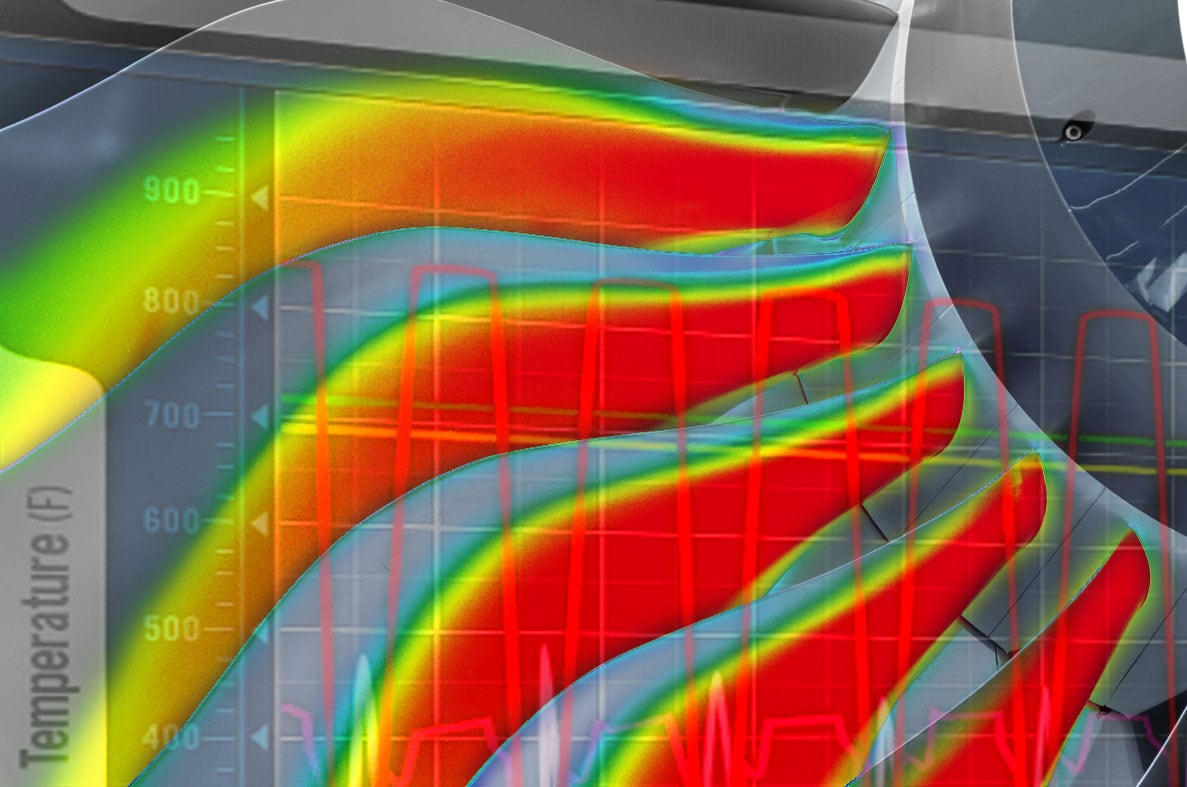New Frontiers in Spin Testing
April 1, 2012
Recent R&D efforts in advanced spin testing paid off when customers presented unique challenges to the Test Devices team.

Challenge #1: Design a demanding high temperature test environment for a proprietary low-cycle fatigue test.
This project required a rim-to-bore gradient of more than 250°F (121°C). The test required a very specific temperature profile and very tight tolerances. Test Devices was able to design rig hardware to create and maintain the steep gradient and the temperature profile within a tolerance of +/- 5°F (2°C) while cycling between the high and low operating speeds. As part of the validation of the oven used for this testing, Test Devices was able to produce thermal gradients of up to 400°F (204°C) from the rim to the bore of rotors sized for large aircraft engines. This test created multi-axial stress fields driven by the combination of thermal gradient and centrifugal load, enabling the OEM to evaluate the durability of the part in more realistic “engine like” conditions.
Test Devices patented crack detection system was able to detect the existence of emerging cracks within the test assembly, and alert the testers of a potential problem before any destructive damage. The use of a reliable crack detection capability allowed Test Devices and our customer to increase the testing interval before halting the test for inspections.
Challenge #2: Test Devices was contracted to conduct proprietary testing to evaluate a unique failure mode driven by a multi-axial stress field in elevated temperature conditions.
The purpose of this test was to confirm the material behavior of a test piece rotating at high-speed and high temperature conditions. Traditionally this type of test involves several iterative runs at incremental speeds. Each of these steps is followed by disassembly, inspection, measurement, and evaluation of the dimensional change on the test disk, and re-assembly for the next increment. This adds time and expense to the test program.
Test Devices has developed an advanced measurement technique to monitor the growth of the disk in-situ at the high-test temperature conditions. This laser-based growth measurement technique was installed in the spin pit, and successfully recorded growth of the test piece throughout the test speed. This measurement system is able to record dimensional changes in a hot test environment up to the disk burst event. This provides critical material data without the interruptions and inconsistencies in the traditional incremental method. The new technology also saved time and money.

